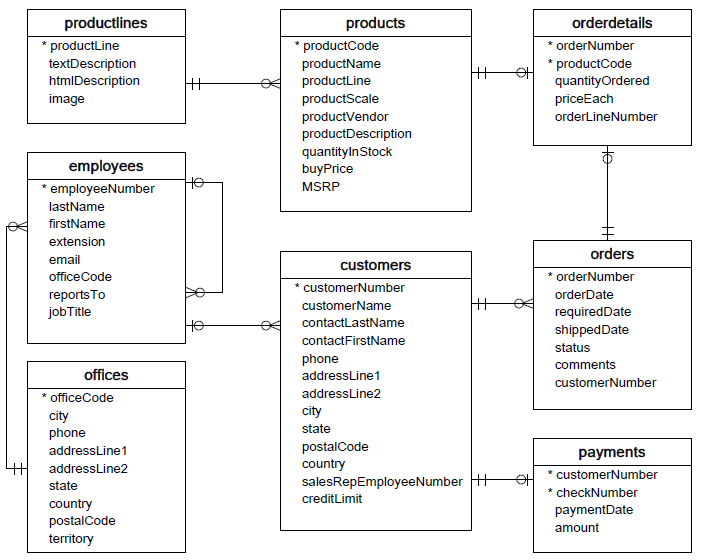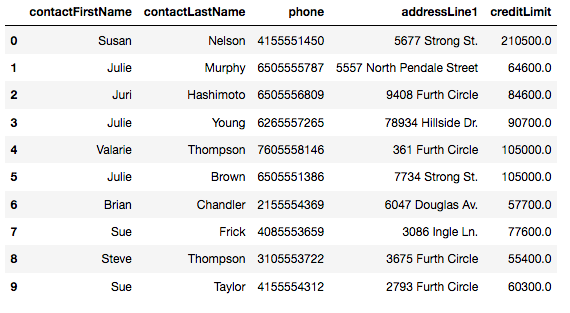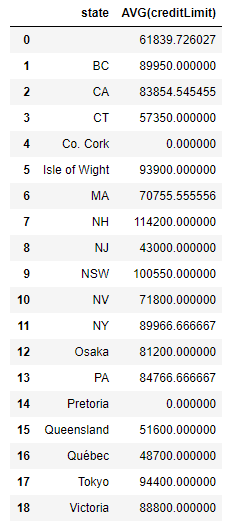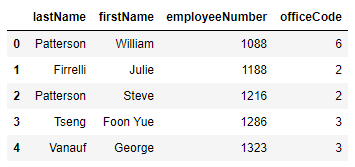More Practice With SQL Queries - Lab
Introduction
In this lesson, we'll run through some practice questions to refresh our knowledge of SQL Queries!
Objectives
You will be able to:
- Practice your SQL knowledge
Getting Started
As in previous labs, we'll make use of the sqlite3 library as well as pandas. By combining them, we'll be able to write our queries as python strings, and make sure that the results are always returned as a pandas DataFrame.
We'll start by loading both libraries and connecting to the database we'll be using for this lab, data.sqlite. You may remember this database from a previous lab. As a refresher, here's the ERD diagram for this database:
In the cell below:
- Import the necessary libraries
pandasandsqlite3 - Establish a connection to the database
data.sqlite - Get the
cursorfrom the connection and store it in the variablec.
Basic Queries
Now, let's review basic SQL queries. In the cell below:
- Write a query that gets the first name, last name, phone number, address, and credit limit for all customers in California with a credit limit greater than 25000.00.
# For the first query, the boilerplate for getting
#the query into a dataframe has been provided for you
c.execute(""" """)
df = pd.DataFrame(c.fetchall())
df.columns = [x[0] for x in c.description]
dfExpected Output
Aggregate Functions and GROUP BY
Next, write a query that get sthe average credit limit per state.
Expected Output
JOINs
Now, write a query that uses JOIN statements to get the customer name, customer number, order number, status, and quantity ordered. Print only the head of this DataFrame.
Expected Output
HAVING and ORDER BY
Now, return the customerName, customrerNumber, productName, productCode and total number ordered for any product a customer has bought 10 or more of cumulatively. Sort the rows in descending order by the quantity ordered.
Hint: For this one, you'll need to make use of HAVING, GROUP BY, and ORDER BY--make sure you get the order of them correct!
Expected Output
Subqueries
Finally, get the first name, last name, employee number, and office code for employees from an office with less than 5 employees.
Expected Output
Summary
In this lesson, we reviewed all the major concepts and keywords associated with SQL queries!





